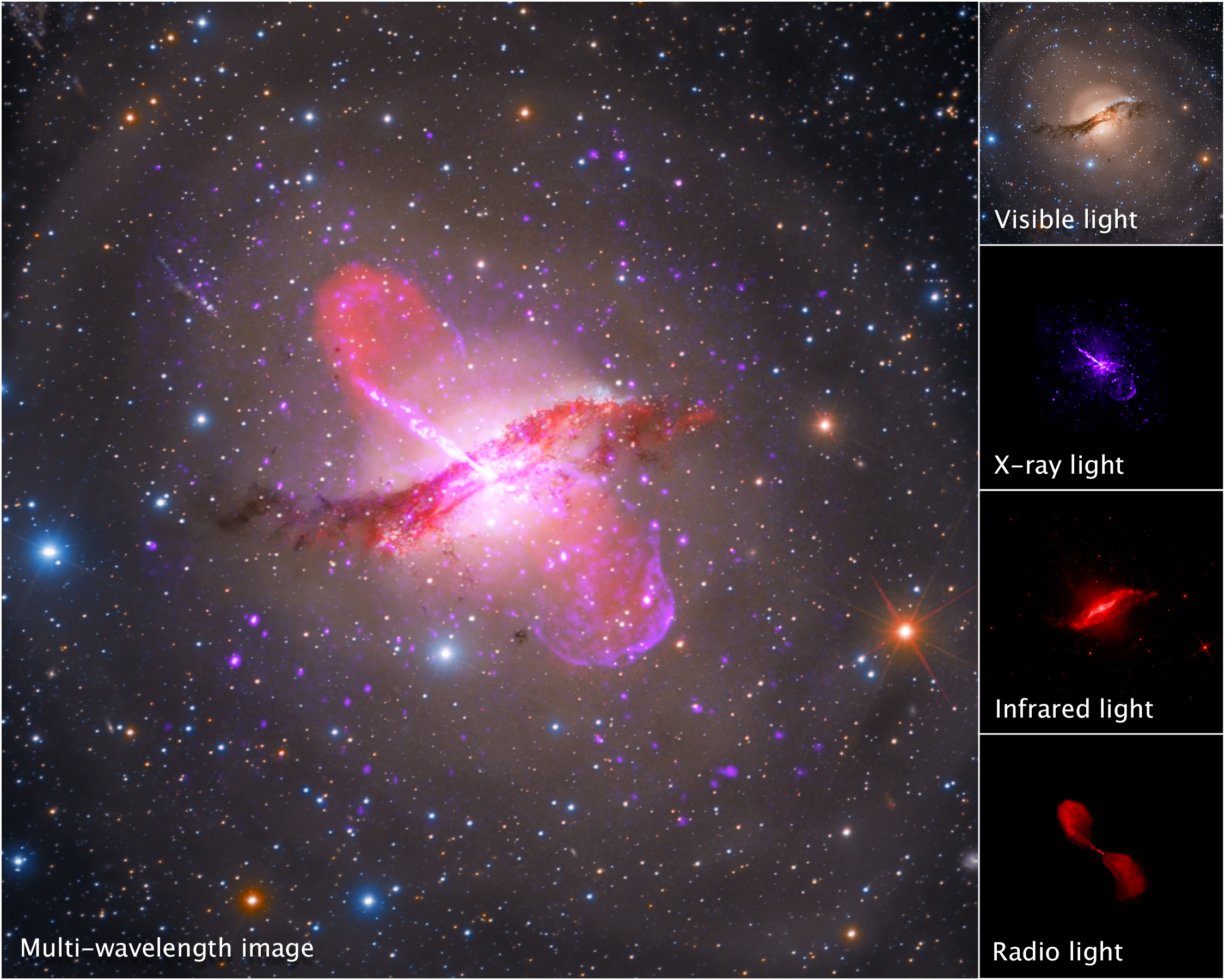1 min read
Dissecting Supermassive Black Holes: The Feedback Loop
Watch as the jets and winds from a supermassive black hole affect its host galaxy—and the space hundreds of thousands of light-years away over millions of years.
Explore our image and video collections to find more videos in this series, including "Pinpointing the Flows,” and “Conditions for Star Formation,” and the complete “Dissecting Supermassive Black Holes” infographic available to admire, print, and post on your wall!
- Release DateMarch 17, 2021
- Science ReleasePeering into a Galaxy’s Dusty Core to Study an Active Supermassive Black Hole
- CreditVideo: NASA, ESA, CSA, Leah Hustak (STScI)
Related Images & Videos

Multiwavelength View of Centaurus A (Hubble, Spitzer, Chandra, VLA)
Centaurus A sports a warped central disk of gas and dust, which is evidence of a past collision and merger with another galaxy. It also has an active galactic nucleus that periodically emits jets. It is the fifth brightest galaxy in the sky and only about 13 million light-years...

Centaurus A in Different Wavelengths (Hubble, Spitzer, Chandra, VLA)
A breakdown of a multi-wavelength image of galaxy Centaurus A shows light collected by Hubble (visible), Chandra (X-ray), Spitzer (infrared), and the Very Large Array (radio). Centaurus A's dusty core is apparent in visible light, but its jets are best viewed in X-ray and radio...

Dissecting Supermassive Black Holes
Supermassive black holes, which lie at the centers of galaxies, are voracious. They periodically “sip” or “gulp” from the swirling disks of gas and dust that orbit them, which can result in massive outflows that affect star formation locally and farther afield. When NASA’s James...
Share
Details
Laura Betz
NASA’s Goddard Space Flight Center
Greenbelt, Maryland
laura.e.betz@nasa.gov
NASA, ESA, CSA, Leah Hustak (STScI)






























